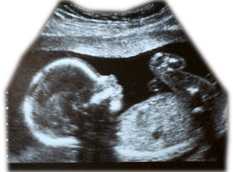4.2 Pregnancy and breastfeeding
 The effect of antipsychotics on prolactin secretion may reduce fertility but the effect varies from drug to drug and possibly from woman to woman.
The effect of antipsychotics on prolactin secretion may reduce fertility but the effect varies from drug to drug and possibly from woman to woman.
It is probable that many antipsychotics enter fetal circulation. Antipsychotics such as chlorpromazine, haloperidol and trifluoperazine have been in clinical use for several decades, but there is little compelling evidence of an association between their use and birth abnormalities.
Use of an antipsychotic in the latter stages of pregnancy can lead to the development of extrapyramidal side effects1 in the newborn as well as withdrawal effects (agitation, hypertonia, hypotonia, tremor, somnolence, respiratory difficulty, and feeding problems). Newborn infants might also display antipsychotic side effects such as lethargy, tremor, paradoxical hyperexcitability—and they may have low apgar score2.
Most antipsychotics are present in breast milk, but the concentration may be considerably smaller than that in maternal blood.
Factors which increase risk
Conditions or concomitant use of medicines that affect menstrual regularity may further affect fertility of women taking antipsychotics which elevate prolactin concentration.
The antipsychotic dose and its duration of use determine the level of exposure of the fetus to the drug.
Risk-reduction measures
Before starting an antipsychotic in a woman of childbearing age, it is valuable to discuss possible effects on fertility and options for birth control. Antipsychotic treatment should be reviewed in women considering starting a family, carefully considering the benefit and risk of continuing antipsychotic treatment. If possible, an antipsychotic, especially prolonged-acting (‘depot’) injection, should be avoided during pregnancy. Women should be advised to discuss their antipsychotic treatment if they discover they might be pregnant.
Specialist advice should be sought if an antipsychotic is continued during pregnancy.
Neonates born to a mother taking an antipsychotic should be carefully monitored for antipsychotic effects including extrapyramidal side effects and withdrawal effects. Any difficulty with breathing and feeding should be addressed.
Avoiding breastfeeding eliminates the risk of exposing a newborn infant to an antipsychotic that the mother is taking.
The following sources may be consulted for further information on the use of antipsychotics during pregnancy and breastfeeding:
- UK Teratology Information Service (Accessed 11 July 2012) telephone 0844 892 0909
- Medicines Information Service specialist advice on drugs in lactation (Accessed 11 July 2012) telephone 0121 424 7298 (Birmingham) or 0116 255 5779 (Leicester)
- Extrapyramidal symptoms or side effects describe movement disorders such as acute dystonia, parkinsonian effects, akathisia and tardive dyskinesia; these effects result from disturbance—by dopamine antagonists—of the extrapyramidal system, which is responsible for involuntary reflexes and coordination of movement. (The voluntary movement system runs through the ‘pyramidal pathways’ of the medulla of the brain)↩
- The result of Apgar test on a newborn 1 minute after birth and again 5 minutes after birth. The test evaluates skin coloration (appearance), heart rate (pulse), reflex irritability (grimace response), activity and muscle tone, and breathing rate and effort (respiration). Each of the five observations is scored on a scale of 0 to 2, with 2 being the best score.↩